
CHATEAU DU CLOS LUCÉ
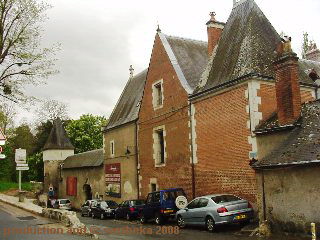 |
It is almost haughtiness to call this residential building "castle", this is why I just refer to its French name. But yes, of course, if there has been such a famous person like Leonardo da Vinci living here, then one can make a castle of it, at least with a little French self-confidence. Haughtiness it is as well, without any doubt, to charge 12,50 Euro for the entrance. But yes, that is also logical: a visitor, already in Amboise, will want to see the da Vinci-museum as well - and then he pays those 5 Euro more, than it is worth. Included in this price are also all those spelling-mistakes in the translations within the castle... |
| Please, get me right: I am a big admirer of Leonardo da Vinci, not at least because of his manifolded knowledge. But probably he himself would think, that his name is used shamelessly here ... But enough about that.
Leonardo lived here during his last few years, after the invitation by King Francis I of France, when he provided him with this residence.
The history of the house is also worth mentioning. It was built in 1471 by Etienne Le Loup, a kitchenhand at the Court of Louis XI, who became nobled by the king. Charles VIII bought it later on from this former servant.
The visit starts in the watchtower, follows the old staircase upwards und ends via the battlement in the sleeping-room of Leonardo. |
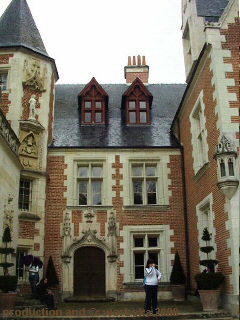
The inner yard of Clos Lucé |
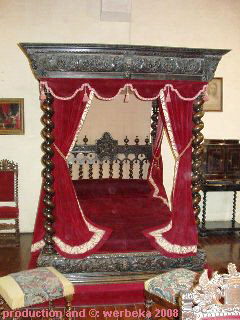
A canopy bed from the renaissance |
This universal genius was not only a technician and painter, but he organized also parties for the Royal Court, at which he delivered some surprises. Once he had constructed a mechanical lion, the chest of which opened to show the lilies of the French Royalty (i. e. Francis I). |
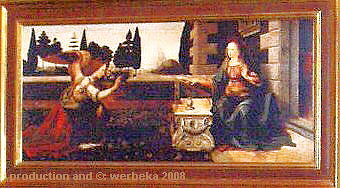
The annunciation of Mary |
On the walls there hang copies of several paintings of Leonardo da Vinci, as well as some quotations, of which most are worth a second thought.
This one, on the picture to the right, says: "Study the Science of Art and the Art of Science." |
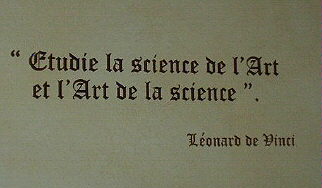 |
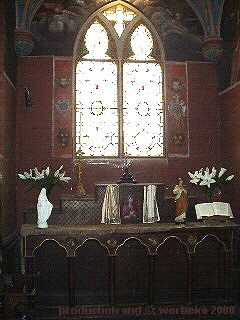 |
After having seen the study of Leonardo the visitor is led down again to the ground floor. There you find first the chapel of Anne de Bretagne, the spouse of Charles VIII. Hither, far off the turbulence of the life at Court, this queen came, not at least to mourn her children, who had died at an early age.
The walls are covered with frescos, which were painted by one of Leonardo's scholars, as it is said. Over the door there is the "Madonna of the Light", because her feet rest on a halfcircle of light. In Latin she is called "Virgo Lucis" - maybe this is the explanation for the name of this place, "Lucé".
After the chapel, one comes to a room, which shall have been the studio of da Vinci, probably because of the plentiness of light. But the inventory is from the 18th century, when the house was owned by the family of d'Amboise. |
| The crystal lustre is from Venice and the tapestries from Aubusson. The latter show among other things the conquering of Jerusalem by the Turks. The furniture in the following rooms is mainly in the style of Louis-Quinze, or at least from the time, when this monarch ruled. In the small parlour there is a wine-barrel in faience, on which a slightly drunk Bacchus is sitting. In the big renaissance-hall, which was Leonardo's reception room, all furniture is from the time of the renaissance, though. |
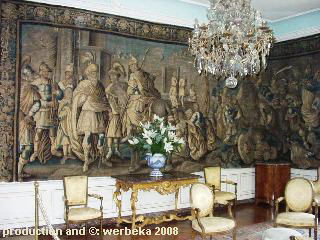 |
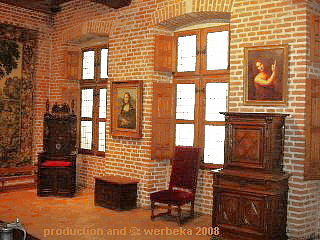 |
Here one finds among other treasures a tapestry from Flanders, Spanish chairs in renaissance-style in Cordoba-leather, carved wooden chests from the 15th century - as well as the document, that says that Charles VIII had paid 3500 Taler for the house.
The furnishings of the kitchen are from the 15th century as well, as are the implements and tools, which are shown there. |
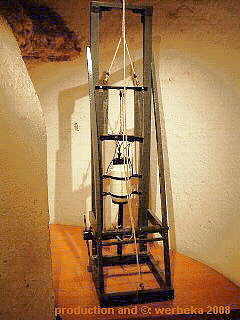 |
In the basement finally, there are four rooms, in which Leonardo's inventions are shown. On the pictures you see a model of a jackhammer and a paddle-steamer. |
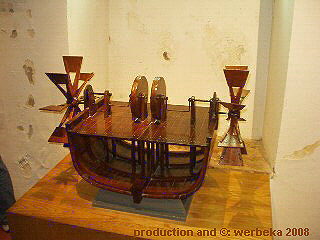 |
All in all there are about 40 machines, which all have been built after da Vinci's drawings.
You can see more technical achievements in the garden, where many models have been built in big scale, sixteen of which are interactive. 32 screens, three or four meters high, show details of Leonardo's creations overdimensionally. Furthermore there are some technical toys, at which you for example can hear "Leonardo's" voice ... But you can also visit slide shows and videos in an auxiliary building, in order to get to know more about this genius and his work.
© Bernhard Kauntz, Wolvertem 2008
|
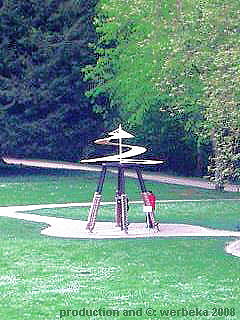 |
Back to  or to the or to the  of of 
last update: 4.12.2008 by webmaster@werbeka.com
|

